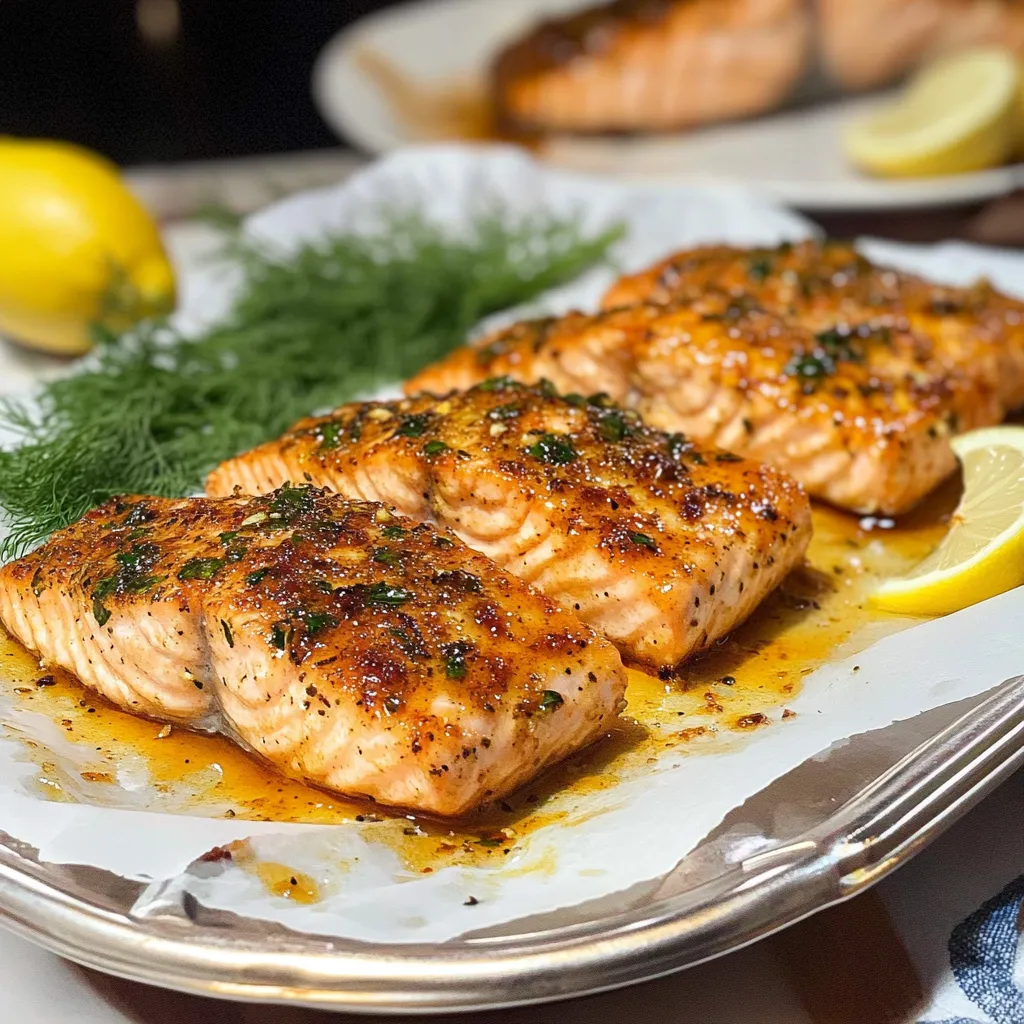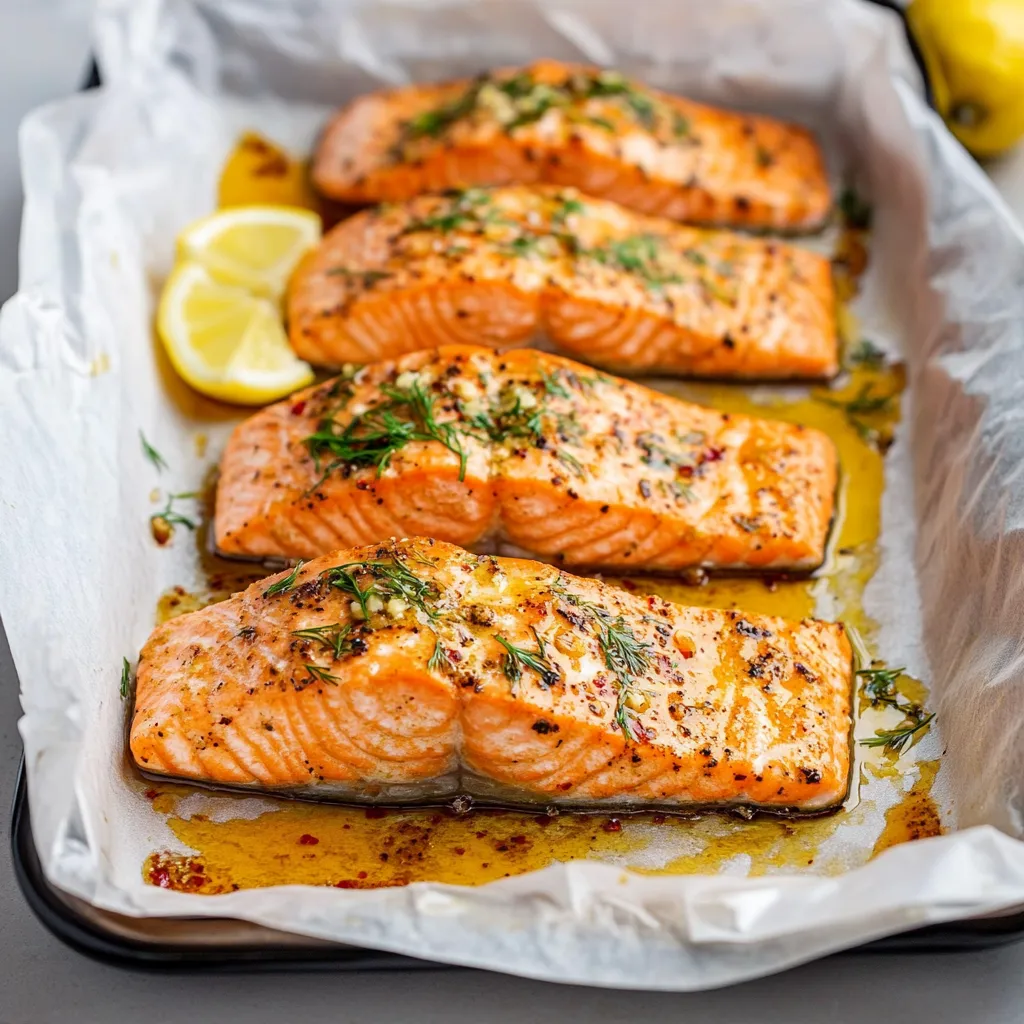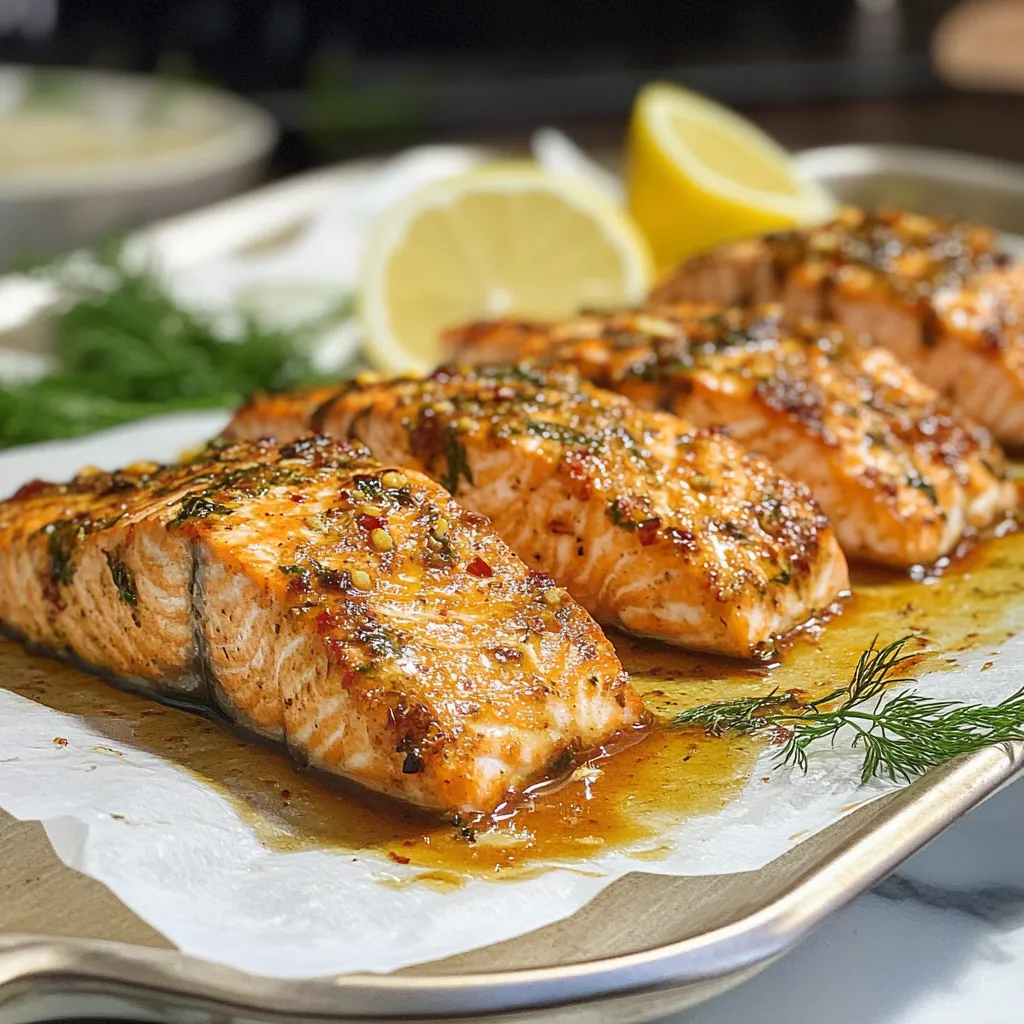 Pin
Pin
Experience the delicate harmony of Mediterranean flavors with this elegant Dijon Baked Salmon. The recipe combines premium salmon fillets with creamy Dijon mustard, fresh garlic, and bright lemon to create a dish that's both sophisticated and simple. As it bakes, the natural oils of the fish blend with the savory mustard coating, forming a golden crust while maintaining a perfectly moist interior.
This recipe emerged from a memorable family dinner where the combination of tangy Dijon and aromatic garlic left an lasting impression. Through careful refinement of the marinade proportions, this version has become a cherished family favorite.
Key Ingredients Guide
- Salmon Fillets: Select vibrant, firm cuts with fresh ocean aroma. Both wild-caught and quality farmed varieties work well.
- Dijon Mustard: Use authentic French Dijon for its distinctive tang and smooth texture.
- Fresh Garlic: Choose plump, firm cloves for maximum flavor impact.
- Extra Virgin Olive Oil: Select a premium variety with rich golden color.
- Fresh Dill: Look for bright, fragrant fronds.
- Lemons: Pick firm, aromatic fruits for best flavor.
Preparation Method
- Initial Prep:
- Rinse fillets and pat thoroughly dry for optimal browning.
- Marinade:
- Mix olive oil and Dijon until smooth, then incorporate minced garlic and seasonings.
- Assembly:
- Apply marinade evenly across each fillet.
- Cooking:
- Bake in preheated oven until just done.
- Finishing:
- Brief broiling creates the signature golden crust.

Traditional coastal cooking inspired this recipe, where Dijon mustard has long been trusted as the key to moist, flavorful salmon. This preparation method honors those time-tested techniques while bringing modern simplicity to the table.
Serving Suggestions
Pair this salmon with light, fluffy quinoa or pearl couscous to absorb the flavorful sauce. Add steamed asparagus or wilted spinach for a complete, nutritious meal.
Recipe Variations
Adapt the recipe by incorporating fresh herbs like rosemary or tarragon. Add heat with cayenne or cracked pepper. The marinade can be adjusted with less oil while maintaining its rich taste.

The beauty of this recipe lies in understanding how each component contributes to the final dish. The Dijon coating creates both protection and flavor, resulting in consistently excellent results.
Recipe Q&A
- → How can I tell the salmon is fully cooked?
- You’ll know when the salmon easily flakes apart when poked with a fork. Aim for a temperature of 135°F taken from the thickest section. The center should look just opaque.
- → Is this something I can make ahead of time?
- The dish tastes best fresh, but you’re free to prep the Dijon glaze a day early. Keep it in the fridge, then let it warm to room temp before adding to the salmon.
- → What should I serve alongside this salmon?
- Pair it with sides like roasted vegetables, couscous, or quinoa. You could also try steamed asparagus or a crisp green salad to balance the main dish.
- → Is it okay to use fillets without skin?
- Sure, but skin-on fillets tend to keep the fish moist. Using skinless? Just shave off about 2-3 minutes from the cooking time.
- → What does covering the salmon with foil do?
- When you cover it, the trapped heat steams the salmon evenly, locking in moisture. Just be sure the foil doesn’t rest directly on the fish.
